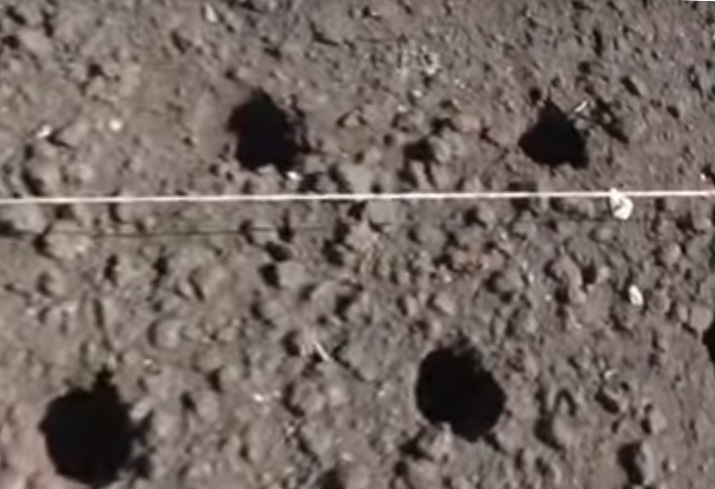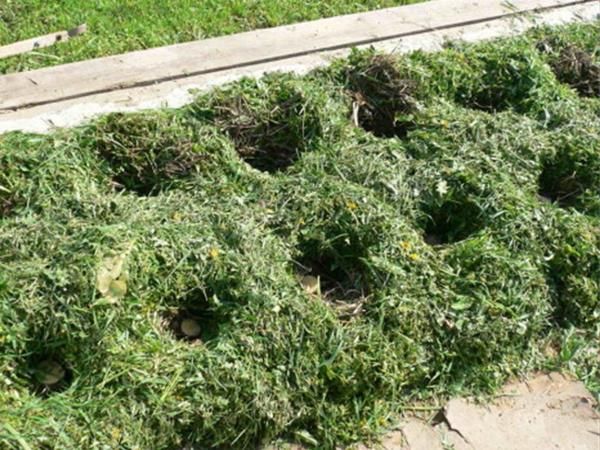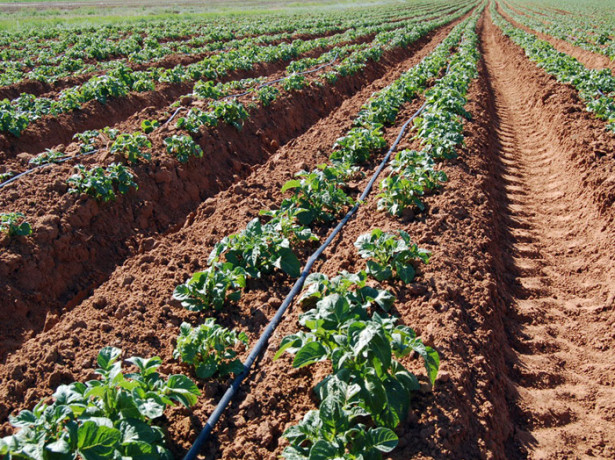Content:
Is it possible, by changing the usual scheme of planting potatoes, to get a larger crop with less labor costs from the same area? Among the schemes known to summer residents, planting potatoes in double rows is more popular. Its second name is the scheme of the method of Dr. Jacob Mittlider.
The advantages of double row planting
With this method of planting, wide aisles are left (80-110 cm), and the bed is made narrow (45 cm). The row is kind of double. Compared with the standard method, the yield under the same conditions increases by 20-25% or more. Main benefits obtained:
- ❏ the ability to use on all types of soils;
- ❏ saving the landing area;
- ❏ there is no need for loosening the soil and hilling potatoes (saving time);
- ❏ the potato bush gets more sunlight;
- ❏ allowed for all climatic zones.
When the dacha is small, the two-row planting method saves space for other crops.
Preparation of planting material
Tubers with healthy, large sprouts are selected. Potatoes with filamentous processes are not suitable for planting.
Planting material is germinated 2 weeks before planting. To do this, place the tubers in a cool place with a temperature of at least 7-8 ° C, lay them in one layer and cover with burlap.
Before planting, large potatoes are cut into 2 parts so that there are sprouts in each half. Dry for 2-3 days to form a protective layer on the sections.
To protect against diseases and pests, the tubers are pickled. For this, systemic drugs are used, which are completely decomposed before the harvest ripens.
How to plant potatoes in double rows
It is necessary to plan the planting of potatoes in the fall, taking into account the crop rotation.
You need to adhere to the following steps:
- In the fall, they choose an open sunny place, dig up the soil, remove weeds, and level the surface;
- Using a rope and pegs, they outline the location of the beds (at a distance of 80-110 cm), which should be from north to south;
- Rotted manure is applied along the entire length of the beds to a width of 40 cm;
- In the spring, as soon as the earth has dried up and the frosts have passed, beds 45 cm wide with sides along the edges 12 cm high are formed in the places designated in autumn;
- They introduce a complex mineral fertilizer - nitrophoska, which contains the elements necessary for growing: nitrogen, phosphorus and potassium (2-3 kg per 100 sq. M), harrow with a rake;
- At a distance of 30 cm from each other (in two rows), recesses are made along the stretched ropes in a checkerboard pattern. The hole is made to a depth of 10-12 cm. Some gardeners use a special device for this purpose;
- 1 tbsp is poured into the bottom of the hole. l. vermicompost (you can "VERMI"), then put sprouted potatoes, on top of it 1 tbsp. l. wood ash, everything is covered with earth or humus;
- To protect against unfavorable factors, retain heat and moisture, the soil is mulched over the planting to a height of 5-10 cm with hay, humus or compost. A layer of mulch will help get rid of weeding;
- Potatoes are planted in moist soil.
In the case when the garden is large, the two-row planter will be an excellent help for large-scale planting work. You can buy it in the store or assemble it yourself.
The subsequent cultivation of potatoes in double rows with wide aisles is carried out, carrying out timely feeding and watering.
Mineral fertilizers are applied to each row twice:
- when the sprouts reach a height of 15 cm;
- before flowering.
Watering is carried out regularly with a moderate flow. Drying of the soil is not allowed. Stop watering at the end of flowering.
Other potato planting schemes
The standard one-row planting pattern varies according to soil density and climatic region. In this case, the distance between the rows is kept within 70-80 cm, between plants - 40 cm. Planting prepared potatoes is carried out:
- ➢ Into ridges, when the soil is heavy clayey or peaty. The height of the comb is 15 cm and more. In arid regions, this planting requires frequent watering;
- ➢ In trenches with light sandy soil. They are used mainly in the southern regions. Trenches are made 15 cm deep. Tubers are protected from overheating and drying out. In autumn, the bottom is filled with straw, plant residues or rotted manure;
- ➢ In a flat bed, lifting the soil with a shovel, after adding the potato, fill it with the same soil. The method is called “under the shovel”.
The heavier the soil, the shallower the potato planting depth, which varies from 5 to 12 cm. Planting is always done in moist soil.
For light soils, the American (deep) planting method has proven itself excellent. The prepared sprouted potatoes are laid in fertilized trenches to a depth of 22 cm at a distance of 22 cm from each other.
In the American method, the plant is forced to form a long etiolated stem, from which the tubers are formed. On the green tops, other processes are already taking place, and leaves are formed from the stolon. This method is not suitable for heavy soils.
There is an experimental method for growing potatoes in bottomless boxes. There is an experience when a bucket of potatoes was obtained from one potato. For this, a box 30 cm high and 60x60 cm in size was covered with compost produced by worms ("VERMI").
Sprouted potatoes were laid to a depth of 20 cm. Watered as needed. The plant had enough sunlight, food and air to the full. 11.5 kg were obtained from the bush.
With any method of growing a potato, whatever the advantages it may have, it is always necessary to take into account the basic requirements of the plant: a sufficient amount of nutrients in the soil, sunlight around it and proper watering. Planting potatoes in double rows with wide aisles takes all these rules into account for growing a rich crop.
















